Introduction
Navigating the world of sleep aids for children, adolescents, and adults can be a complex journey, especially when it comes to melatonin. This hormone, pivotal in regulating sleep-wake cycles, has seen a dramatic rise in use across various age groups, with many parents turning to it as a solution to help their children sleep better. However, determining the appropriate dosage and understanding the potential risks and benefits are crucial steps in ensuring its safe use.
This article provides comprehensive guidelines on melatonin dosage tailored to different age groups, from children to older adults, and underscores the importance of consulting healthcare providers to navigate this landscape safely and effectively. By delving into research findings and expert recommendations, this guide aims to empower parents and caregivers with the knowledge needed to make informed decisions about melatonin use.
General Guidelines for Melatonin Dosage by Age
Melatonin is a hormone that plays a crucial role in regulating sleep-wake cycles. The suitable amount of this sleep aid varies significantly with age, reflecting the different needs and sensitivities of individuals. Studies show that the use of this hormone has increased among all age demographics over recent decades, with a notable number of parents giving it to their offspring. For example, a study conducted by the American Academy of Sleep Medicine revealed that around 46% of parents had administered a sleep aid to youngsters under the age of 13.
When determining the right dose, it's essential to start with a low amount and adjust based on effectiveness and tolerance. For preschoolers, the median dose is 0.5 mg, for school-age youngsters it is 1 mg, and for preteens, it is 2 mg, typically given 30 minutes before bedtime. This gradual adjustment helps in identifying the minimal effective dose while minimizing potential side effects.
The American Academy of Pediatrics suggests using this supplement only as a temporary solution to assist young ones in getting rest. However, many parents report regular use, with pre-schoolers taking it for a median of 12 months, primary school-aged children for 18 months, and pre-teens for 21 months. Despite its popularity, it's important to note that this supplement should be used cautiously and under medical supervision to ensure safety and effectiveness.
Furthermore, the quality and formulation of sleep aids can differ, making it essential to select trustworthy brands. Gummies are the most common form used across all age groups (64.3%), followed by chewable tablets (27.0%), pills (6.3%), and liquid (2.4%). The increase in pediatric sleep aid usage, with a 530% rise in reports of its consumption in youngsters from 2012-2021, highlights the necessity for careful oversight and suitable dosing.
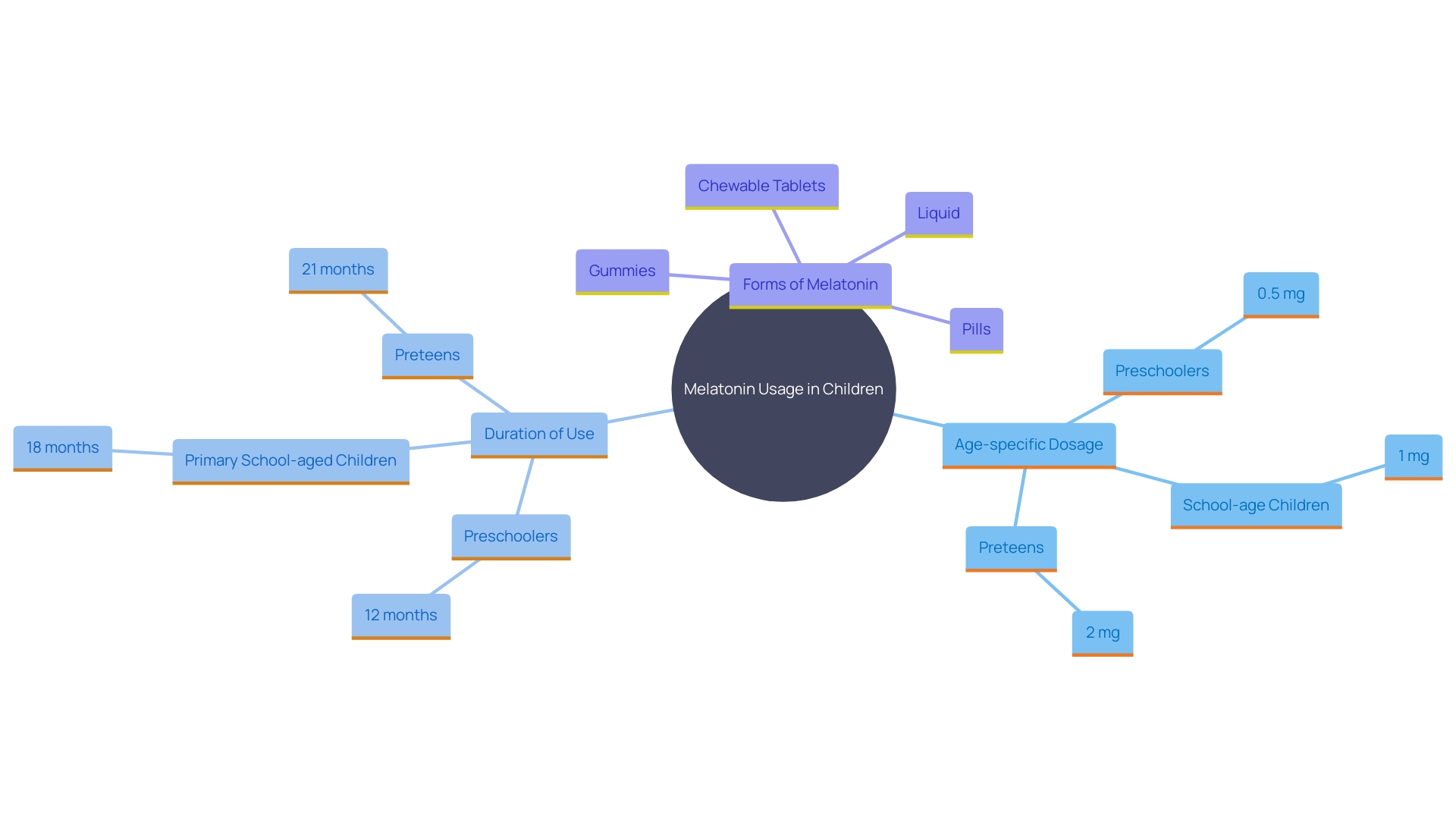
Melatonin Dosage for Children
For young individuals, melatonin dosages typically range from 0.5 to 3 mg taken 30 to 60 minutes before bedtime. It's advisable to start at the lower end of the dosage range. Parents should observe their offspring's response and consult with a healthcare provider before making any adjustments. The aim is to discover a dosage that aids in encouraging restorative rest without inducing drowsiness the next day.
In recent years, the use of sleep hormone among youngsters has increased significantly. A study published in JAMA Pediatrics found that 46% of parents have administered a sleep aid to youngsters under the age of 13 to assist them in sleeping. The American Academy of Pediatrics advises that this supplement only be utilized as a temporary measure to help children in obtaining sleep. Despite this, many parents report using sleep aids regularly, with pre-schoolers taking them for an average of 12 months, primary school-aged children for 18 months, and pre-teens for 21 months.
In the US, this sleep aid is available as a dietary supplement and can be bought without a prescription. This ease of access has likely contributed to its widespread use. According to an online survey by the American Academy of Sleep Medicine, the median dose of the hormone was 0.5 mg in preschoolers, 1 mg in school-age kids, and 2 mg in preteens. The timing of the hormone's administration was consistent, with a median of 30 minutes before bedtime across all age groups.
However, with the increased use of the hormone, concerns have been raised. The American Academy of Pediatrics emphasizes that this hormone should not be a long-term solution for sleep problems. A clinician observed, 'With the rising use of this substance, this has been a growing problem.' Considering this, parents ought to be careful and consult experts to guarantee the secure and productive use of this supplement for their children.
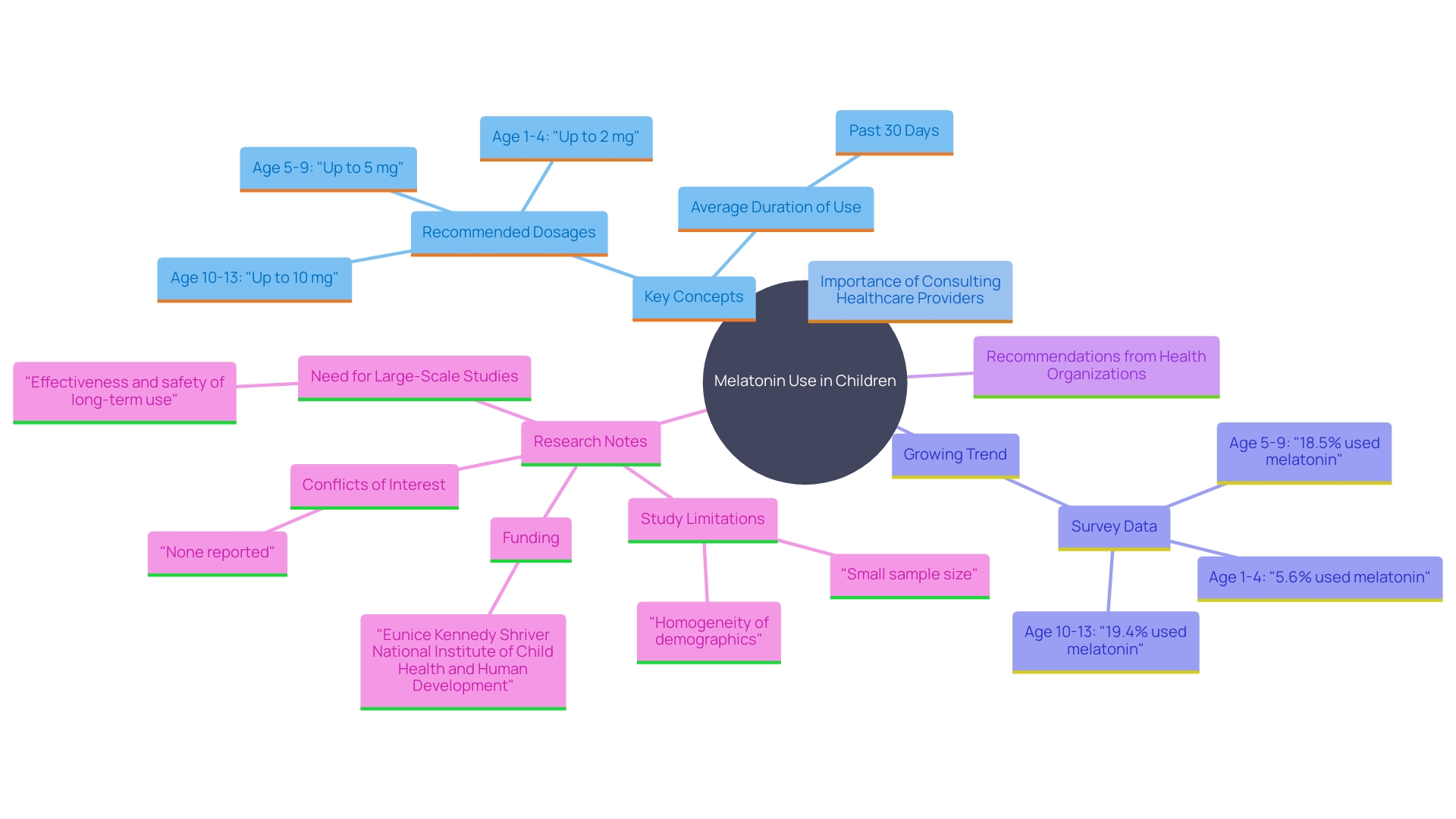
Melatonin Dosage for Adolescents
Young individuals may need somewhat greater amounts of the hormone, typically ranging from 2 to 5 mg, to assist with resting. This age group undergoes notable hormonal shifts and heightened stress, which can interfere with rest patterns. According to the American Academy of Pediatrics, this supplement should be used as a short-term solution to help teens get rest, as prolonged use may interfere with natural sleep cycles. Research published in JAMA Pediatrics highlights a significant rise in the use of sleep aids among young individuals and teenagers, indicating that many parents are using it regularly for their offspring. Between 2017 and 2018, about 1 percent of children and adolescents under 19 had taken the sleep aid in the past 30 days, with current data indicating a 20 percent rise in usage. Consulting a healthcare professional for personalized guidance is essential to ensure its safe and effective use.
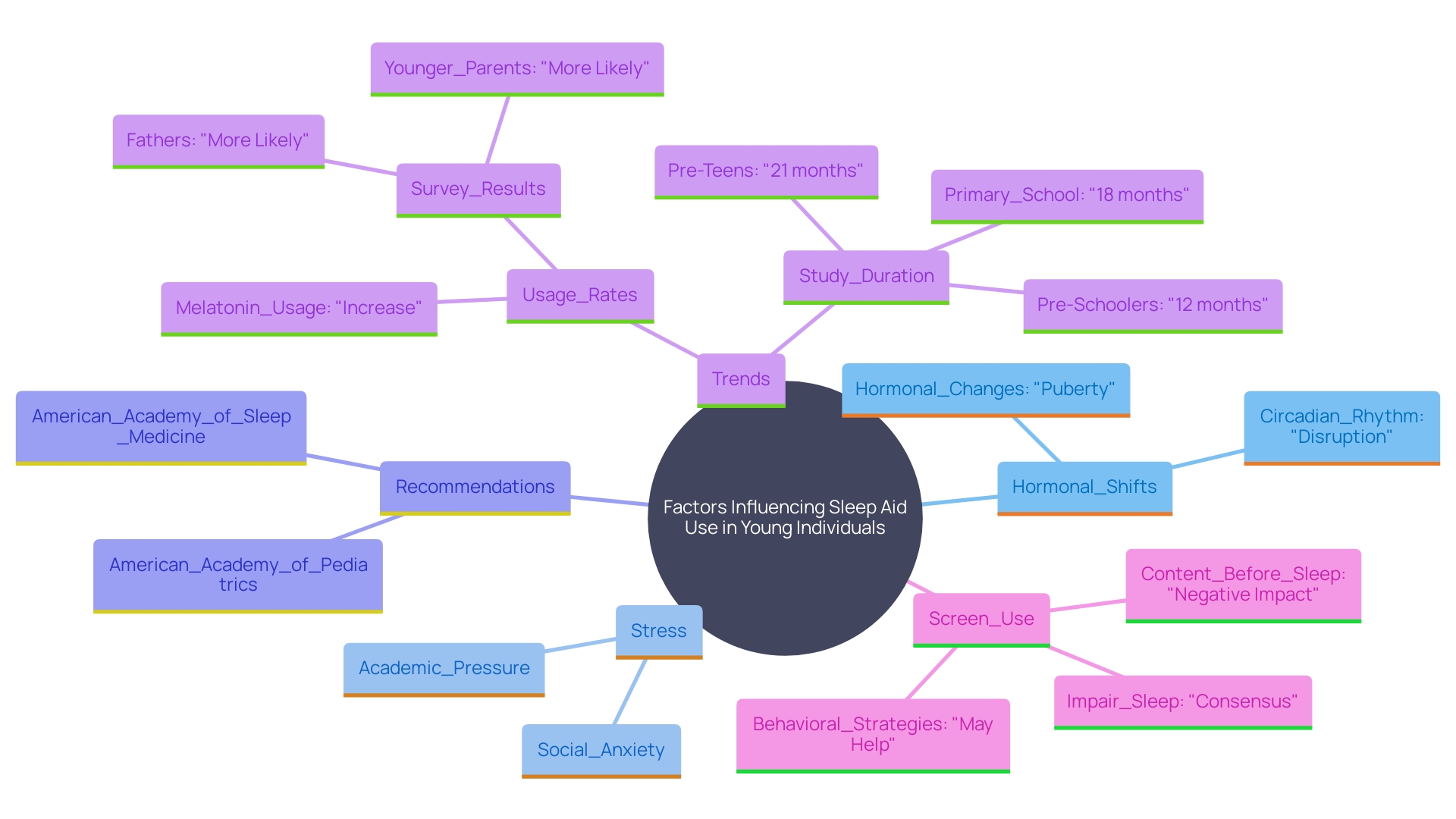
Melatonin Dosage for Adults
For grown-ups, the usual dosage of this hormone varies from 1 to 10 mg, with many people discovering that 3 to 5 mg significantly enhances rest quality. Personal factors such as body weight and overall health should be considered when determining the appropriate dose. It's crucial to avoid higher doses unless advised by a healthcare provider, as overly high doses can lead to undesirable side effects. Studies involving night shift employees have demonstrated that this hormone can improve rest quality without notably impacting insulin resistance, emphasizing its function in assisting individuals with altered circadian rhythms. Furthermore, although the vast majority of unintentional ingestions of this hormone result in minor or no negative reactions, it is crucial to keep all health products out of children's reach. Healthcare professionals are encouraged to report any adverse reactions to ensure ongoing safety monitoring.
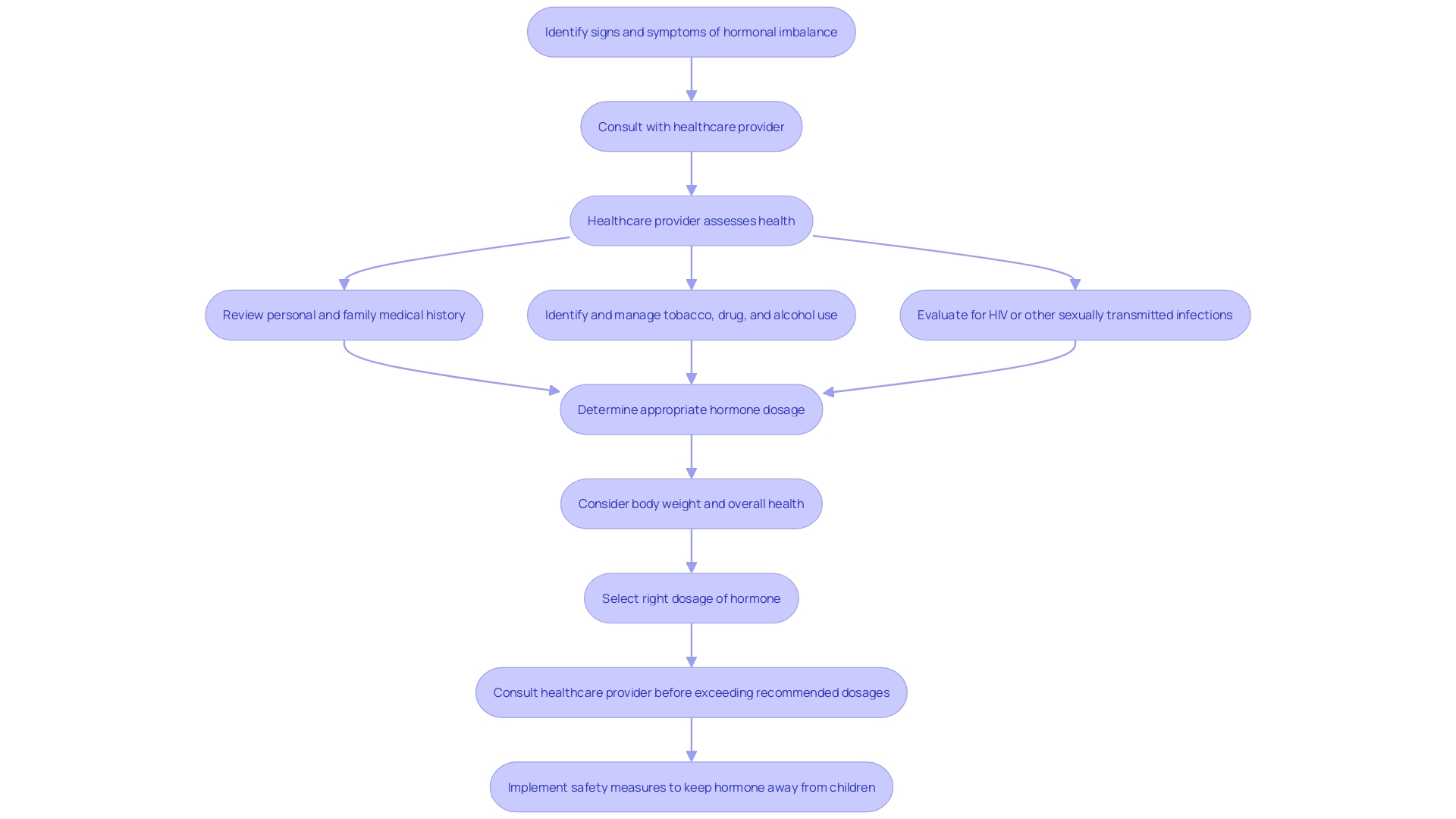
Melatonin Dosage for Older Adults
Elderly individuals may gain advantages from reduced amounts of melatonin, generally varying from 0.5 to 3 mg. Since melatonin production naturally decreases with aging, supplementation can be helpful for improving rest quality. Research has indicated that even a minor decrease in deep rest, prevalent among older adults, can significantly elevate the risk of dementia. For instance, a study published in JAMA Neurology found that a 1% decrease in deep rest per year for people over 60 translates to a 27% increased risk of dementia. Thus, enhancing sleep quality with the hormone could have significant advantages.
However, older adults are more susceptible to side effects from this supplement, making it crucial to begin with the smallest effective dose. Seeking guidance from a healthcare professional for tailored recommendations is crucial to guarantee the safe and effective use of the supplement. In clinical trials, adherence to sleep hormone regimens has shown to be beneficial without significantly affecting other health metrics, such as insulin resistance. This underscores the importance of tailored medical guidance, considering the individual health status and sleep needs of older adults.
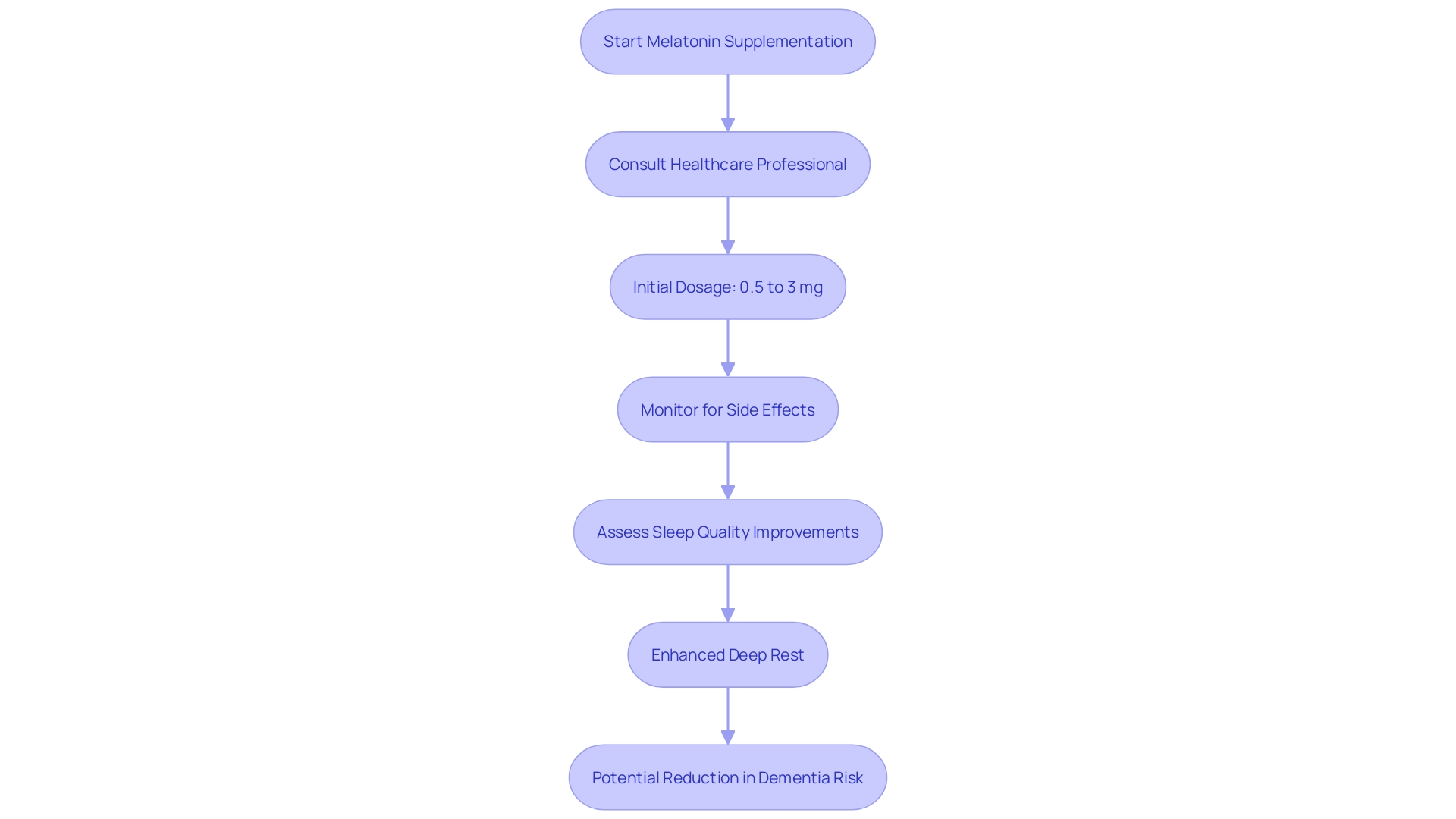
Safety Considerations and Potential Side Effects
'While this sleep hormone is generally considered safe for short-term use, potential side effects include daytime drowsiness, dizziness, and mood changes.'. Observing for any negative responses is especially vital in young individuals and older adults. According to a study published in JAMA Pediatrics, the use of a certain supplement among youngsters has increased considerably, with approximately 19.4% of preteens utilizing the aid for rest in the past 30 days. This rise is attributed to increased screen time and mental health issues. The American Academy of Pediatrics suggests that this supplement only be utilized as a short-term remedy for sleep issues. Extended use, particularly in young individuals, should be approached with caution and always under medical supervision to ensure safety.
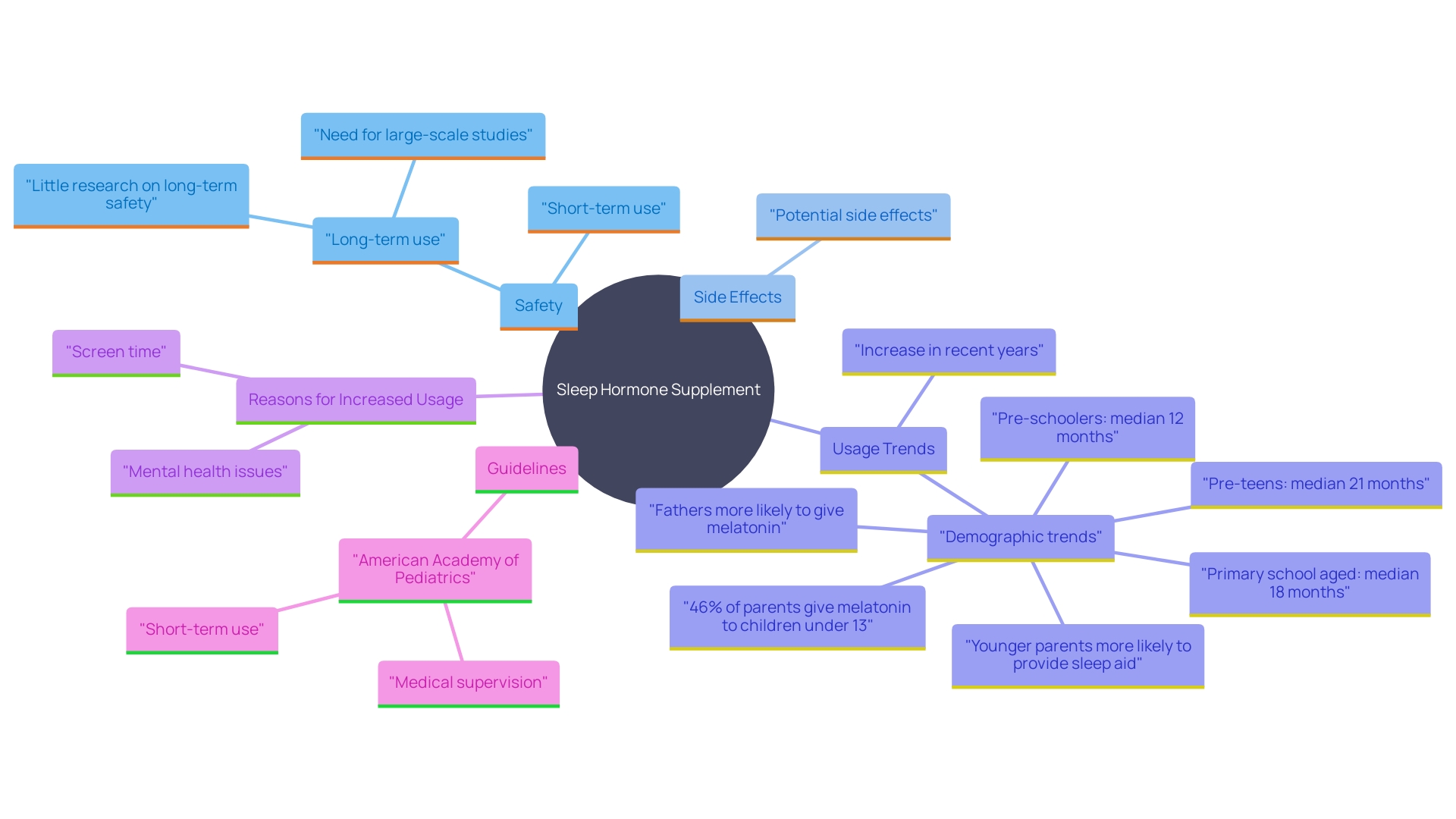
Importance of Consulting a Healthcare Provider
'Considering the notable rise in the use of this hormone among young individuals and the possible dangers linked to incorrect dosage, seeking advice from a healthcare professional is crucial.'. A healthcare professional can accurately determine the appropriate dosage, considering factors such as age and health conditions, which is crucial for safe and effective use. For example, in an online survey conducted by the American Academy of Sleep Medicine, approximately 46% of parents reported administering a sleep aid to youngsters under 13, emphasizing the extensive usage and the necessity for expert advice. Furthermore, research has indicated that the use of this hormone has increased significantly, with as many as 20% of young individuals consuming it regularly. This underscores the importance of medical supervision to monitor for potential interactions with other medications and to ensure safe usage practices. As Hartstein and colleagues noted, “Widespread melatonin use across developmental stages may suggest a high prevalence of sleep disruption, which deserves accurate diagnosis and effective treatment.” Therefore, professional advice is invaluable to navigate these complexities and ensure the well-being of children.
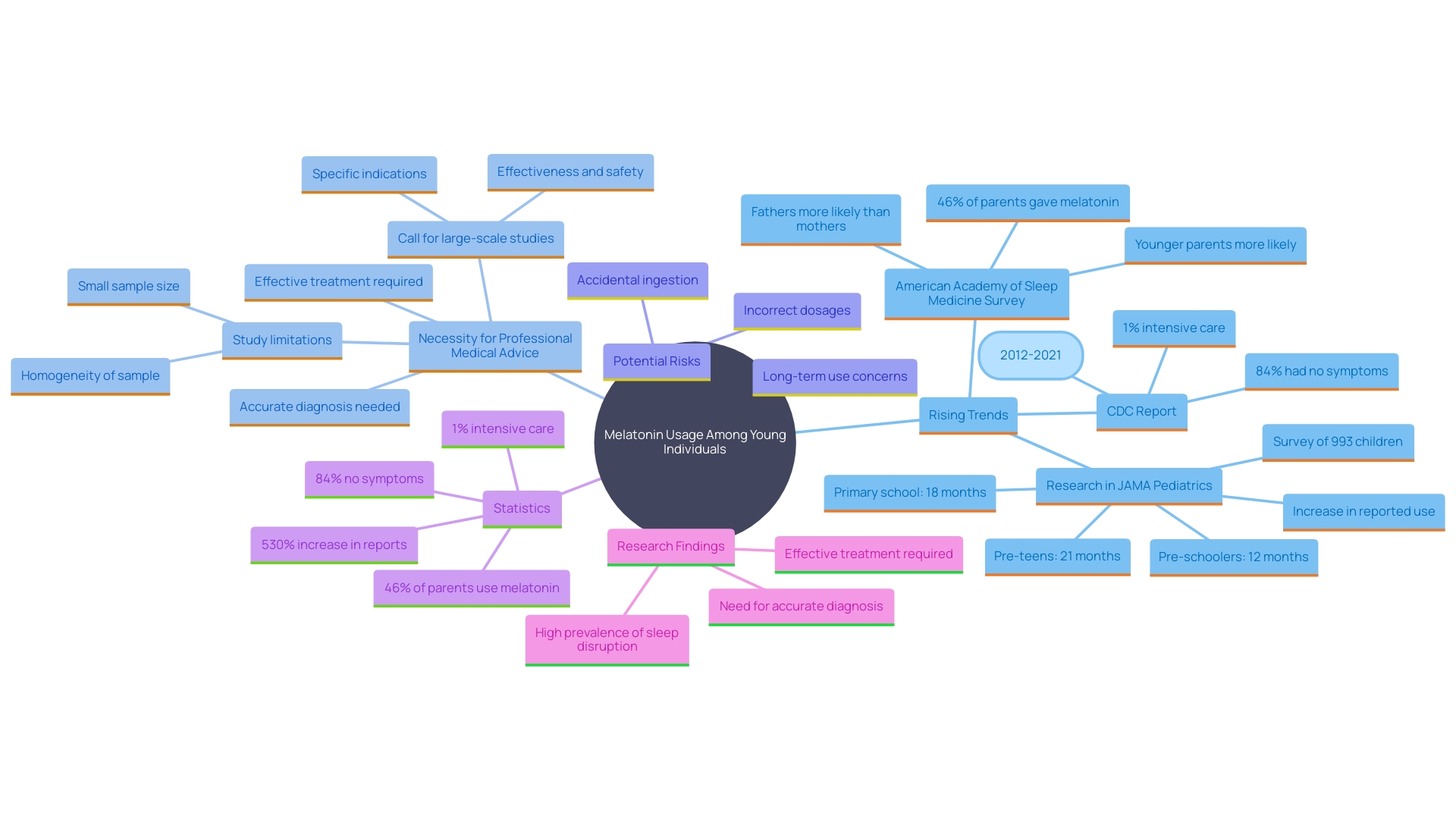
Conclusion
The exploration of melatonin use across various age groups highlights its growing popularity as a sleep aid, particularly among children and adolescents. Understanding the appropriate dosage tailored to specific age ranges is paramount for ensuring safety and effectiveness. Starting with low doses and consulting healthcare providers can help parents navigate the complexities of melatonin use, minimizing risks while promoting restful sleep.
For children, the recommended dosages range from 0.5 to 3 mg, with an emphasis on short-term use. Adolescents may require slightly higher doses, reflecting their unique developmental challenges. Adults typically find success with doses between 1 to 10 mg, while older adults benefit from lower doses due to increased sensitivity.
Monitoring for potential side effects, especially in vulnerable populations like children and the elderly, is essential for safe usage.
Ultimately, the importance of professional guidance cannot be overstated. With the significant rise in melatonin use, parents are encouraged to seek advice from healthcare providers to ensure that their children receive the most appropriate and safe treatment for sleep issues. Empowered with knowledge, caregivers can make informed decisions that prioritize the health and well-being of their children, fostering better sleep habits for a brighter future.




